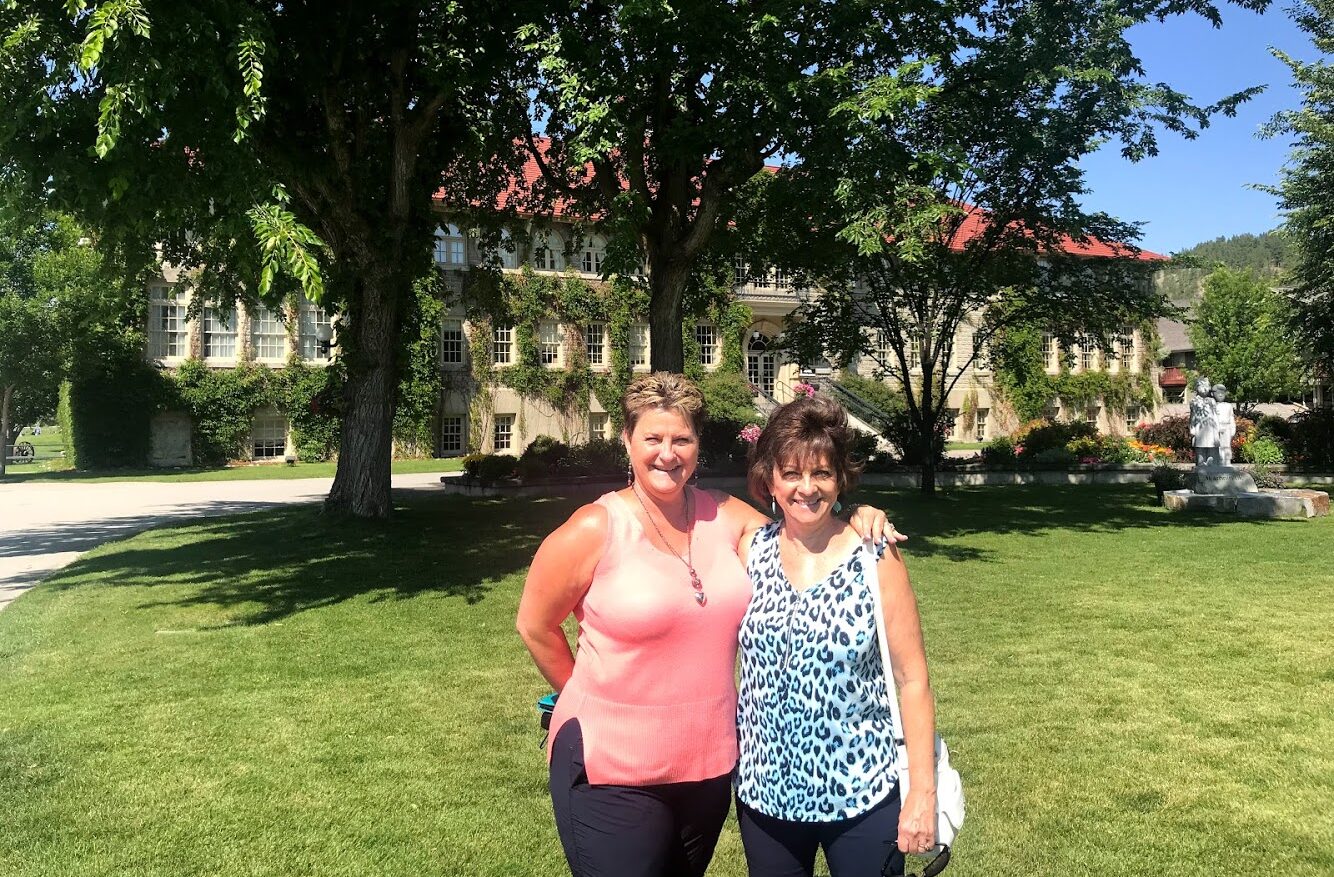
The Oblate Order founded the first mission near the site of the current mission in 1873. The first building served initially as a school, residence and later as a hospital. Financing the new mission buildings was in part provided by the 1893 discovery of a rich ore body by Pierre, a Ktunaxa First Nations member. He brought a sample of rich galena ore to Father Coccola, head of the St. Eugene Mission, and the two staked claims above the town of Moyie. Father Coccola sold the claim for $12,000 and constructed the St. Eugene Church (prefabricated in Italy) in 1897, which graces the Mission area today.

Within a decade, the St. Eugene Mine produced more than $10 million in ore and gave the Consolidated Mining and Smelting Company (later Cominco) its start. With this infusion of capital, the Mission became a large self-supporting complex, pressing its own grain in the region’s first flour mill.
In 1910, the Canadian government funded and constructed the St. Eugene Mission school, at the time called the Kootenay Indian Residential School and presently the main part of our hotel complex. Operated at the time by the Oblates of Mary Immaculate, the facility was the first comprehensive Indian ‘Industrial and Residential’ school to be built in the Canadian West. Operating under the government’s assimilation policy, the Mission instructed 5000 children from the Okanagan, Shuswap and Blackfoot Nations in addition to the area’s Ktunaxa Nation.

The school was closed in 1970 when government policy changed to encourage public education for Indian children. In 1973, the British Columbian government leased the Mission with the intent of turning it into a psychiatric care facility. The building was stripped of historic fixtures and artifacts, and after spending $750,000 on renovations the project was abandoned. The following winter, the pipes burst and the building suffered severe damage from internal flooding. The building remained empty for the next 20 years and was the victim of repeated vandalism.
For decades, the direction of former Chief Sophie Pierre provided a dedicated and driving force in reclaiming the Ktunaxa heritage. She was consistently inspired by Elder Mary Paul’s belief that “You lose something only if you refuse to pick it up again.” The saga of the mission-hotel began with a lengthy healing process, and an exorcism of ghosts both real and imaginary. Some believed the building held their future; others wanted to completely eradicate the building along with the bad memories.
The building of the Resort took ten incredibly difficult years. Consensus began with family visits to the school, ‘kitchen table’ talks and two years of internal marketing to over 1,500 members of the five bands who share the 130 hectares of reserve land. Finally, a referendum was held, and all bands voted overwhelmingly in favour of restoration, with the project team energetically seeking funding to develop the resort. Federal job development money allowed band members to learn valuable skills while they gutted and restored the school, stripping the interior back to its red brick walls.

The bricks, fired in neighbouring Fernie and laboriously shipped upstream a century ago, are a major feature of the interior. But bricks and a great location weren’t going to be enough. It’s as Chief Pierre used to say, “Figure out what makes you special; that’s what you sell. We’re selling an opportunity to understand our history, to know our people and to share our vision of turning a 60-year nightmare around. We’re creating new memories for our children.”
The St. Eugene Golf course opened in May 2000 and was rated one of the top three Best New Canadian Courses by Golf Digest in 2001. Designed by acclaimed architect Les Furber, it is indeed a masterpiece in an incredible setting. “This large property contained many different environments,” said Furber, “allowing a freedom of style which is unusual in a single 18-hole layout.” Emphasis was also put on naming all 18 holes in the traditional Ktunaxa language and pride of ownership can be felt from every tee box.
The Casino of the Rockies, the only casino operated on Indian Reserve lands in British Columbia, opened next in September 2002, followed by the St. Eugene Hotel in January 2003. The Resort now boasts three onsite restaurants and a fully equipped fitness facility. St. Eugene is also rapidly becoming the premier wedding destination in the Kootenay Rockies. Inside the lower level of the St. Eugene Hotel is the Ktunaxa Interpretive Centre which proudly displays handcrafted items and other culturally significant artifacts of the Ktunaxa culture.
To my knowledge, the St. Eugene Mission is the only project in Canada where a First Nation has decided to transform the icon of an often sad period of its history into a powerful economic engine by restoring an old Indian Residential school into an international destination resort for future generations to enjoy.

